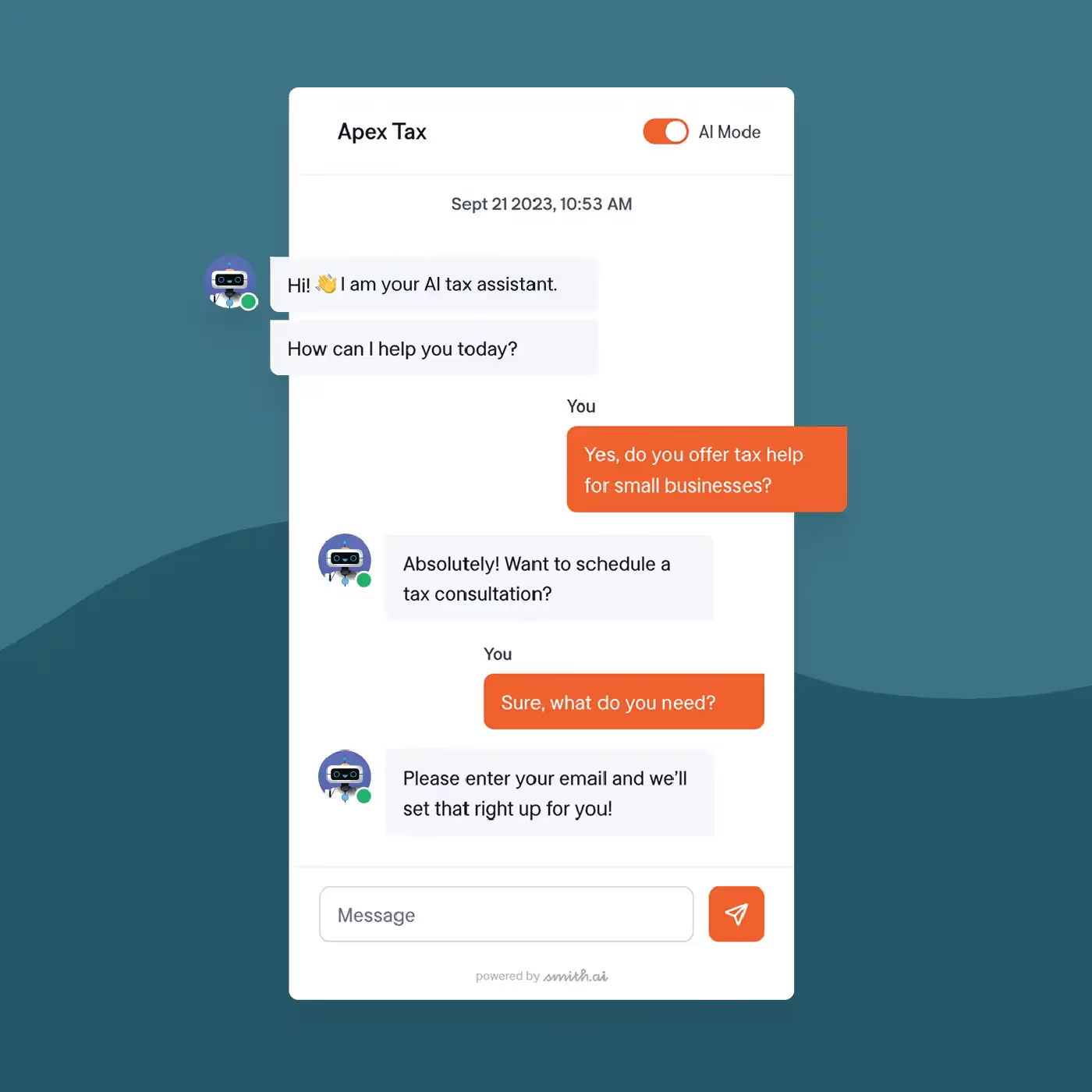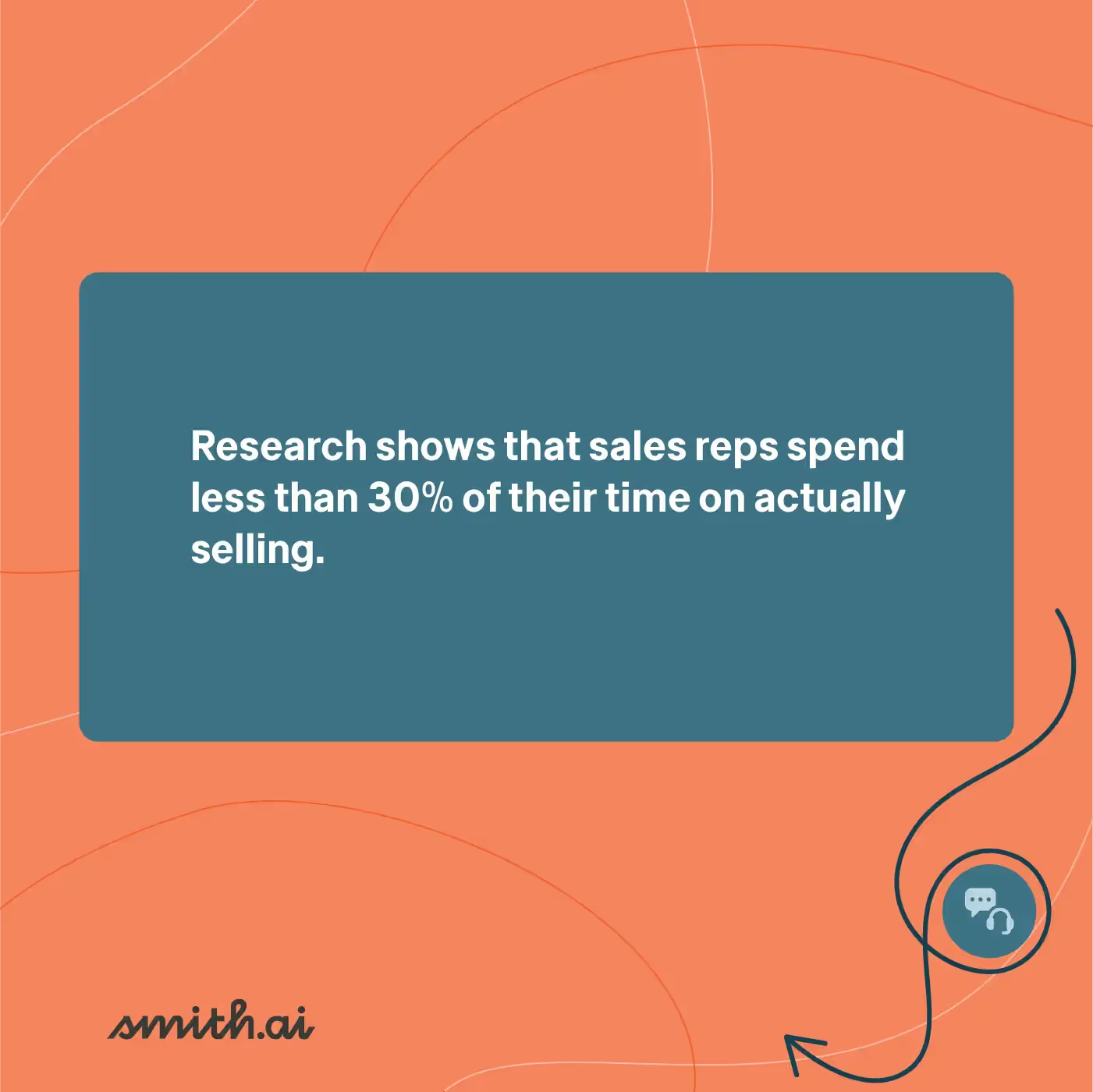How to Use Lead Capture AI: A Strategic Guide for Business Growth
How to Use Lead Capture AI: A Strategic Guide for Business Growth

We talk with business owners every day who tell me the same story: "I know I should be using more technology, but between managing crews, keeping clients happy, and putting out daily fires, who has the time to figure all this out?"
Sound familiar?
The truth is, when you're spending your days on job sites, in meetings with clients, and dealing with supply chain headaches, lead generation often gets pushed to the bottom of the priority list. But it's also the lifeblood of your business.
That's where lead capture AI comes in. The global adoption of AI has surged remarkably, rising from approximately 50% six years ago to an estimated 72% in 2024, according to a McKinsey Global Survey.
If you're wondering how to start integrating AI into your business, this guide will help you understand the strategic benefits and steps involved.
Understanding Lead Capture AI
Definition and Importance of Lead Capture AI
Lead capture AI combines systematic data collection with artificial intelligence to transform how your business can identify, qualify, and convert potential customers. By leveraging effective lead magnets, you can attract potential clients and capture their information, which can then be processed by lead capture AI.
Think of it as having a virtual assistant who:
- Answers your phone at 2 AM when a potential client decides they need a quote right now
- Remembers everything about every interaction with every lead (without having to dig through email chains)
- Tells you which prospects are most likely to sign a contract (based on their behavior, not gut feeling)
- Follows up automatically so leads don't fall through the cracks when you're busy on a job site
Implementing effective lead generation tactics alongside lead capture AI can significantly enhance your ability to attract and convert potential clients.
Addressing Common Sales Leads Challenges
87% of sales leaders who have adopted AI reported that it positively impacted their sellers' daily work experience. This impact stems from AI's ability to address common challenges you're likely facing:
- Time drain: Sales teams spend a ton of time just researching and following up with leads. What if you could automate some of this process?
- Lead quality issues: How many times have you spent hours preparing a detailed quote for someone who was never serious in the first place?
- Inconsistent follow-up: When you're juggling multiple projects, it's easy for potential leads to slip through the cracks.

Types of Lead Capture AI Technologies
Conversational AI and Chatbots for Lead Capture
Chatbots function as 24/7 sales representatives on your company website, providing:
- Proactive Engagement: Modern chatbots initiate conversations based on user behavior triggers, such as time spent on your services or project gallery pages.
- Around-the-Clock Lead Capture: Chatbots collect valuable lead information outside your business hours, ensuring no opportunities are missed while you and your team are on job sites.
- Personalized Responses at Scale: Using natural language processing, AI receptionists can understand and respond to customer queries in real-time, guiding prospects through the buying process with tailored recommendations for your services. By delivering personalized chatbot experiences, you can improve conversion rates and foster better customer relationships.
AI Receptionists and Customer Service Assistants in Lead Capture AI
These systems manage more complex communications by:
- Intelligent Routing: Determining when to handle inquiries themselves and when to involve your specialists or project managers.
- Pre-qualification: Qualifying leads before they reach your sales team, prioritizing the most promising opportunities for your business.
- Contextual Understanding: Maintaining context throughout conversations across multiple interactions about your services, pricing, and availability.
Implementing Lead Capture AI Solutions
Step-by-Step Guide
1. Assess Your Current Lead Generation Process
Before implementation:
- Audit your existing lead capture methods and identify bottlenecks in your business
- Define clear objectives for your lead capture AI implementation
- Determine key success metrics for your sales process
- Identify your most valuable lead data points specific to clients
Understanding the process of building a sales funnel can help you map out the customer journey and optimize each stage for better conversions. Following AI lead generation best practices can help you identify the areas where AI can have the most impact.
2. Structure Your Lead Capture AI Team
Establish clear roles within your business:
- Lead Capture AI Specialist: Manages automation tools, understands customer personas, and establishes workflows
- Creative Copywriter: Crafts engaging content for emails, landing pages, and social media about your services
- Sales Representatives: Handle tasks requiring personal touch like follow-up calls to discuss specific projects
4. Integrate Lead Capture AI with Existing Systems
For effective lead capture AI lead scoring in your business:
- Configure APIs or use native integration tools with your existing software
- Ensure real-time data synchronization between systems
- Make lead scores accessible within your CRM
- Maintain data consistency across platforms
Understanding the CRM integration overview can help you ensure a smooth connection between your lead capture AI and existing systems. Additionally, integrating virtual receptionists with your CRM can enhance communication and lead management efficiency.
5. Test and Refine Your Lead Capture AI Setup
Before full deployment across your business:
- Run a pilot program with a segment of your audience
- A/B test different approaches to see what resonates with potential clients
- Gather feedback from customers and internal teams
- Make necessary adjustments to optimize for your specific market
6. Monitor, Measure, and Optimize
After implementation:
- Deploy the model across your sales and marketing workflows
- Continuously monitor performance against established metrics
- Regularly optimize your lead capture AI models as buyer behaviors change
- Ensure alignment with your business sales goals
AI-only vs. AI-Human Hybrid Approaches in Lead Capture
When implementing lead capture AI in your business, you must decide between fully automated systems or approaches that combine AI with your team's expertise.
Comparison and Benefits
AI-only approach benefits:
- Maximum efficiency: Processing thousands of interactions simultaneously
- 24/7 availability: Providing round-the-clock support across all time zones when your office is closed
- Cost-effectiveness: Reducing operational expenses after initial implementation
- Consistency: Delivering uniform responses across all interactions about your services
Companies using lead capture AI for customer experience management have witnessed a 54% increase in customer satisfaction scores.
Hybrid AI-human approach benefits for your business:
- Enhanced personalization: Your team excels at understanding nuanced emotional needs that AI may miss
- Complex problem-solving: Your human agents address complicated questions requiring judgment
- Emotional connection: Human empathy creates stronger customer relationships in sensitive situations around large projects
- Augmented human capabilities: AI supports your agents with information and suggestions
For more on the importance of human empathy and AI in service, consider how blending AI precision with human touch enriches customer experiences.
AI-only works best for your business in:
- Routine inquiries (service information, availability, basic FAQs)
- Initial customer triaging
- Scenarios where speed is paramount
- Markets with straightforward products
Hybrid approaches excel in your business for:
- Complex problem-solving requiring judgment about custom projects
- High-value customer interactions for major builds
- Situations involving detailed project specifications
- Interactions with emotional customers or sensitive issues around timelines and budgets
Measuring Effectiveness: Metrics and KPIs for Lead Capture AI
Key Performance Indicators
To optimize your business's lead capture AI-powered strategies, track these specific metrics:
Core Volume and Conversion Metrics
- Number of Leads: Total potential clients expressing interest
- Lead Conversion Rate: Percentage of leads converting to customers for your services
- Lead Velocity: Rate at which leads progress through your sales funnel
Lead Quality Metrics
- Marketing Qualified Leads (MQLs): Leads meeting criteria for further marketing outreach about your services
- Sales Qualified Leads (SQLs): Leads ready for direct sales engagement with your managers
- Lead Source Analysis: Understanding which channels generate the most valuable leads
Efficiency Metrics
- Lead Response Time: Duration taken to respond to inquiries about your services
- Time to Conversion: Average duration from initial capture to sale for different project types
- Sales Lifecycle Length: Total duration of your business sales process
Financial Performance Metrics
- Cost per Lead: Expense incurred to acquire each lead
- Customer Acquisition Cost (CAC): All expenses associated with acquiring a client
- Customer Lifetime Value (CLV): Average Project Value × Average Project Frequency × Customer Lifespan
Engagement Metrics
- Engagement Rate: (Total Engagements / Total Impressions) × 100
- Net Promoter Score (NPS): Measures customer satisfaction and recommendation likelihood for your business
- Unsubscribe Rate: Percentage of subscribers opting out, signaling potential content issues
Addressing Challenges in Transitioning to Lead Capture AI
Common Challenges and Solutions
Integration Complexities
You’re probably using multiple software platforms, creating significant integration challenges.
Solutions for your business:
- Conduct thorough examination of your current systems before implementation
- Design unified architecture using well-crafted APIs
- Consider third-party integration solutions with pre-built connectors for unique industry software
- Deploy cross-functional teams to manage the integration process
Solutions for your business:
- Clean your CRM by removing duplicates and outdated information about past clients
- Implement data enrichment tools to fill missing information about potential clients
- Establish data cleaning processes where AI transforms raw data into actionable metrics
- Create data quality standards and maintenance procedures
For more on managing customer data with AI, consider these best practices to ensure your data is reliable and actionable.
Integration with Existing CRM and Marketing Automation Tools
Organizations that successfully integrate their CRMs with other platforms can experience business growth of 20-30%. However, while 60% of companies have invested in CRM integration, less than one-third have extended this to other systems.
Data Integration and Consistency Management
Research shows 10-25% of B2B marketing databases contain critical errors, impacting marketing effectiveness.
To ensure proper data integration in your business:
- Create robust data mapping between your systems
- Implement regular data cleansing processes
- Establish data governance protocols
- Define standards to prevent duplicate entries of potential clients
API Utilization and System Connectivity
When planning your integration:
- Leverage native APIs provided by your platforms
- Consider Enterprise Service Buses for complex integration scenarios
- Implement real-time data synchronization
- Document all API connections for easier maintenance
Best Practices
- Align Personalization: Ensure consistency in demographic information across platforms for your leads
- Create Comprehensive Lead Scoring: Align priorities across your teams and regularly review methodology
- Configure Important Triggers: Specify which activities trigger updates between your sales and marketing teams
- Eliminate Redundancies: Establish processes for reviewing accounts to resolve errors
- Implement Efficiently: Develop maintenance plans that empower your teams to adapt as needs evolve
Conclusion
Begin your business's lead capture AI implementation journey incrementally, starting with small projects that demonstrate value. Focus on maintaining quality data about your potential clients, establishing proper governance, and balancing AI capabilities with your team's expertise.
The companies that adopt AI capabilities today will be the market leaders of tomorrow.
Ready to see how AI can improve your lead management process? Book a free consultation today to explore how Smith.ai's AI Receptionist can capture, qualify, and convert more leads for your business while you focus on what you do best!
Take the faster path to growth. Get Smith.ai today.
Key Areas to Explore
Technical Implementation Terms
Voice user interface (VUl) design
Speech recognition integration
Text-to-speech optimization
API connectivity and webhooks
Real-time data synchronization

Your submission has been received!








%20(1)%20(1).avif)




.svg)



